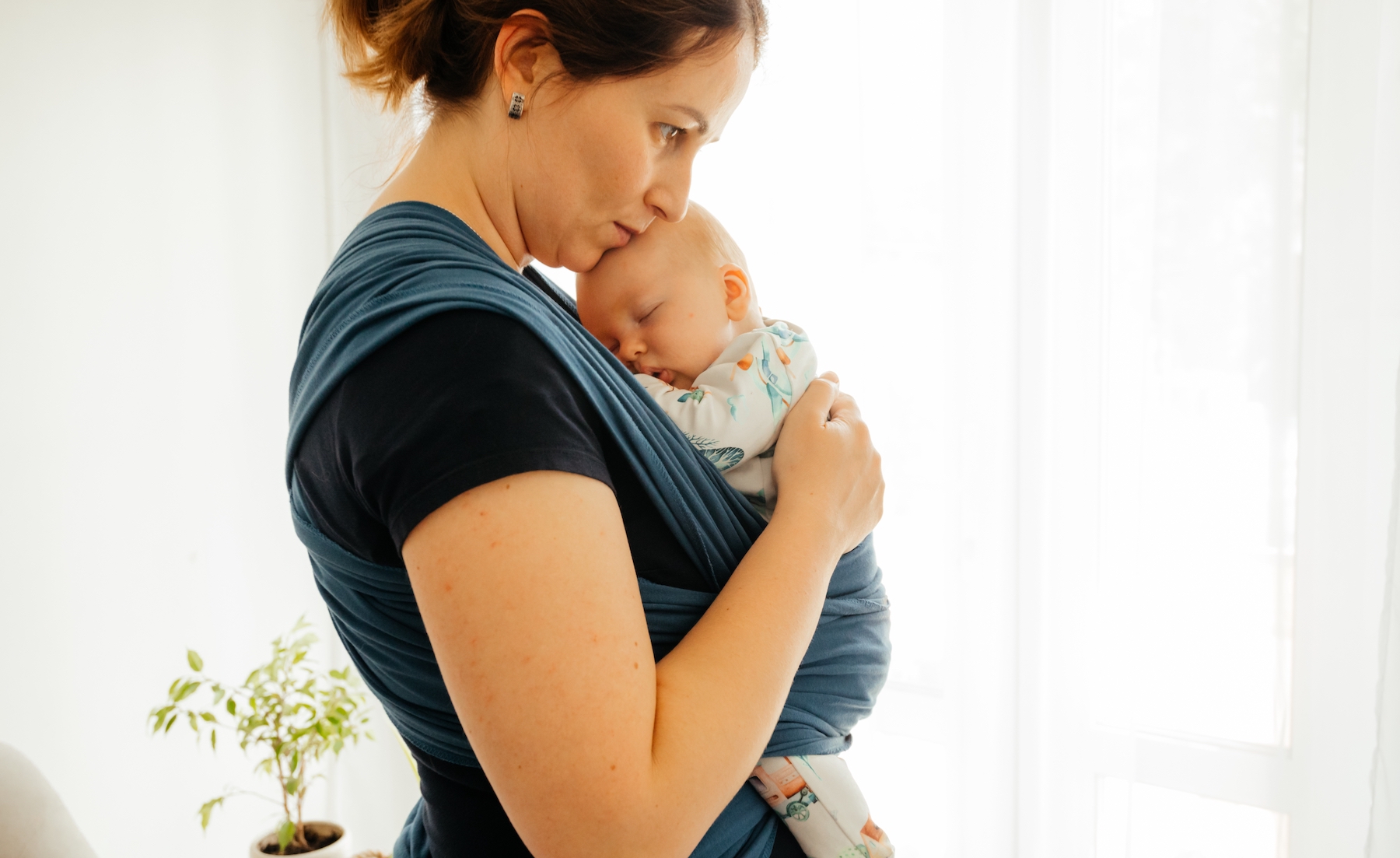Larger than Intercountry Adoption
Adoption Advocate No. 136
I. Introduction
The work of intercountry adoption agencies has always been larger than simply the placement of children with families. In addition to the placement of children, these agencies— as actors with a unique position allowing them access to some of the most vulnerable children in the world—have a unique role in providing humanitarian aid to communities across the globe. During the early years in China, the donations associated with intercountry adoptions built a child welfare system;2 in recent years, celebrities adopting children have taken on humanitarian roles much larger than their new family,3 and so have average families. Many intercountry adoption agencies provide services beyond the mere act of facilitating the transfer of children.4
This article takes a closer look at the role of the aid, alongside a legal analysis of the laws currently in place, to ask the question whether, on balance, humanitarian aid coupled with intercountry adoption is cause for concern, and to begin to review the extent of work that intercountry adoption agencies are doing within the realm of humanitarian aid. This article analyzes both the current reality on the ground and the laws currently in place to protect some of the world’s most vulnerable children, and concludes with some thoughts on how to alleviate concerns about any dangers that may be associated with intercountry adoption agencies and actors engaging in humanitarian aid.
II. The Situation on the Ground
There are two clear sides to the debate over the role of money and humanitarian aid within the intercountry adoption system. With the implementation of the Hague Convention on Protection of Children and Co-Operation in Respect of Intercountry Adoption (the “HCIA”), the debate remains unresolved; while having wide-reaching effects on intercountry adoption as a whole, the HCIA fails to fully handle the humanitarian aid in the system. On the one side, the advocates of aid flowing through the intercountry adoption system point out the benefits that can come from the aid: In many instances, aid has propped up or even built a system that was otherwise underfunded, such as in China and Ethiopia. In these countries, intercountry adoption has been a driving factor in capacity-building for welfare systems, and has contributed to satisfying many day-to-day needs of some of the world’s most vulnerable children.5 On the other side of the spectrum, critics allege baby-buying and widespread corruption in the face of aid coupled with intercountry adoption.6 The HCIA, in a number of ways, dances in the middle of these two extremes: recognizing the benefit, but stressing the dangers that come from poor implementation of aid systems.
a. Adoption Trends
Although intercountry adoption has tapered off in recent years with increasingly laborious regulations and countries outright closing their borders, the analysis of aid coupled with adoption is particularly important because if aid is an integral part of adoption agencies’ activity, the curbing of adoption would subsequently have widespread implications on aid currently directed to child welfare globally.
After steadily growing in the 1990s, intercountry adoption saw its peak around 2004-2005 with around 45,000 intercountry adoptions annually, approximately 23,000 of which were by those residing in the United States.7 Since that time, though, numbers have fallen rapidly, halving that peak by 2011 with just 23,552 children adopted globally, 9,320 of whom came to the United States.8 Beyond 2011, the numbers declined further, so that by 2017 only 4,714 children are estimated to have been adopted into the United States, and just 9,387 globally.9 In 2018, there were only 4,059 adoptions to the United States.10
b. Donation Trends
In 2016, the Harvard International Law Journal published a report on the number of intercountry adoption agencies in the United States that provided, under the umbrella of their intercountry adoption agency, humanitarian aid in conjunction with their adoption services.11 At that time, 68 of the 114 intercountry adoption providers, or 59.6%,12 contributed humanitarian aid.
Qualitatively, the research showed that the international aid went to an incredibly wide swath of services that were currently receiving either no, or inadequate, funding. These uses include private children’s homes. Amazing Grace, an adoption agency based in North Carolina that handles both domestic and intercountry adoptions, has started a private children’s home in Uganda for orphaned children as an alternative to state-run, underfunded institutions. Working alongside the state-run institutions, Bal Jagat – Children’s World, which works alongside state-run institutions in China, offers very practical items such as washing machines, refrigerators, and other appliances to supplement the equipment and facilities present for children who may very likely never be adopted. Children of the World has built additions onto orphanages across the world, resulting in greater facilities and spaces for the children residing in them.
In addition to basic living facilities for children across the world, intercountry adoption agencies often also contribute to the education of these children. BAAS International has a “Back 2 School” Program targeted at providing the necessary resources (everything from textbooks to feminine hygiene products) to keep youth in schools. In addition to formal schooling assistance, BAAS contributes to vocational programs to offer a range of opportunities to those children who otherwise may not have a means to make a living. Amazing Grace Adoptions provides for the very tangible needs of schools in Uganda by laying cement floors to prevent the diseases and parasites present in the soil from being a threat to the children attending the schools.
Healthcare is another area in which adoption agencies are uniquely poised to provide a range of services: everything from basic healthcare on the spot to programs that can transport children overseas for complicated care unavailable in their home nations. Children of the World has provided the opportunity for children to obtain emergency medical care in the United States. Dillon International has what it calls “Baby Showers,” raising money for all of the initial supplies necessary for a new baby. International Child Foundation provided medical equipment for a children’s ward in a hospital in Tokmok, Kyrgyzstan.
Most broadly, many agencies look at the much larger picture of child welfare rather than only the children currently institutionalized, eyeing how they can transform an entire community. BAAS’s Rise and Shine Porridge Breakfast Program feeds over 330 children each day before school, giving them the nourishment necessary to tackle the lessons and receive their education. Bethany Christian Services provides resources to families to lead to self-sufficiency, which provides opportunities for children to stay in their families of origin where possible and appropriate. In 2018, Holt International served over a quarter million children and families in their work providing family strengthening, orphan care, and adoption.13
Finally, a number of nations have mandated aid in conjunction with intercountry adoptions, perhaps most notably China. The formerly mandatory donation in China is credited with building the larger child welfare system, and in many ways propping up the institutions as well as setting a requisite threshold of care for institutions to abide by.14 Further, these mandatory donations, when aggregated, can be put toward important long-term expenses, such as system-wide improvements and monitoring, as compared to the pressing day-to-day expenses such as formula and diapers, which can often monopolize funding at the expense of the important long-term investments.15
To take Ethiopia, where donations have been perhaps best documented, as a small case study: It was estimated in 2010 that $14 million was spent on aid services by intercountry adoption agencies alone.16 Perhaps most illuminating is the fact that although less than 0.1% of Ethiopia’s children and families were served by intercountry adoption, 1.6 million families and children benefited from the aid provided.17
III. The Law
The law governing intercountry adoption today is a myriad of overlapping regulations promulgated by a number of different organizations with varying levels of authority. At the most basic level, each individual nation has laws governing how intercountry adoptions are conducted for both sending from, and receiving into, their nation. There are two international treaties that handle intercountry adoption. The first, and most specific, is the Hague Convention on Protection of Children and Co-Operation in Respect of Intercountry Adoption, (the “HCIA”), mentioned above. As of August 2019, there are 101 contracting parties to the convention.18 Second, the Convention on the Rights of the Child (“CRC”), as a child’s rights document, has a number of provisions which affect intercountry adoption.19
There are two main issues that the HCIA and CRC are instructive upon: (i) the condemnation of financial gains for intercountry adoption, and (ii) a prioritization on subsidiarity.
a. Prohibition on Financial Gains
Most articulately, Article 4(c)(3) of the HCIA admonishes organizations for paying parents to relinquish their children, forcing the Central Authority of each nation to ensure that no consent has been induced by payment. More broadly, Article 8 of the HCIA prohibits the Central Authorities from activities leading to financial gain, which encompasses the actions of service providers in the nation. The CRC mirrors this sentiment in Article 21, stating that nations shall “take all appropriate measures to ensure that, in inter-country adoption, the placement does not result in improper financial gain for those involved in it.”
b. Priority on Subsidiarity
The promotion of subsidiarity is the principle that adoption providers must look internally for adoption placements before beginning the process of finding international homes for children. As such, in order to prevent money and aid in the intercountry adoption system from prioritizing international placements where undue, the HCIA provides procedures whereby the Central Authorities of any government must have mechanisms to ensure that intercountry adoption is considered only after the placement for a child within the state of origin has been “given due consideration” and that intercountry adoption “is in the child’s best interests.”20 The CRC similarly iterates that intercountry adoption is not a first choice, but rather an alternative upon the finding that a child cannot be suitably cared for domestically through either the family of origin or foster or adoptive families.21 In practice, however, many adoption advocates have serious concerns that the principles of subsidiarity are misinterpreted, leaving children institutionalized in damaging conditions while looking for adoptive families that may simply not exist in the country of origin.22
IV. Weighing the Benefits and Risks
At the most basic level, the question that must be asked is whether the benefits of providing aid with intercountry adoption are, on balance, greater than the risks and associated costs of providing aid. Although this is a basic question, not nearly so clear are the issues of how to weigh the risks and calculate the benefits solely attributable to aid being coupled with intercountry adoption.
a. Does the Aid Coupled with Intercountry Adoption Provide Benefits?
Objectively, after review of Section II.b. above, it can be seen that aid is being provided in conjunction with intercountry adoption services, filling a gap that no other aid is currently reaching. The much more difficult question, however, is in a complicated counterfactual analysis: whether this aid would be provided in the absence of intercountry adoption.
At a basic level, this question asks whether individuals, in the absence of adopting children, would give the amount they spent on the intercountry adoption process, and on raising their child, to an international cause contributing to child welfare, in addition to whether, in the absence of intercountry adoption, individuals who would have adopted internationally would have an affinity to provide for the children of that nation. The literature in this area has often focused on the evangelical intercountry adoption movement, and notes anecdotally that “the experience of loving one former orphan deeply can forge a deep and lasting concern for all orphaned children. It gives a concrete form to the broad challenges facing orphans around the world.”23
Perhaps what can best be summarized with hard evidence is that intercountry adoption, generally, is filling a gap that no other activity is. In 2014, 235 out of the 366 children adopted from India were deemed “Special Needs.”24 In 2010, 108 out of the 406 children adopted internationally from Thailand were deemed “Special Needs.”25 Perhaps most tellingly, the statistics of Bulgaria show that out of the 66 special needs adoptions that occurred in 2010, 57 of the children were adopted internationally.26 In 2011, 89 out of 98 special needs adoptions occurred internationally, and in 2012, 123 out of 129 special needs adoptions were international placements.27 Although the statistics have not been kept in a number of interim years, in 2017 there were still 133 out of 156 special needs adoptions being handled internationally.28 Of these 133 children, 124 special needs children from Bulgaria found their forever homes in the United States.29 Effectively stated: In the absence of intercountry adoption, the odds of a special needs child being provided a forever home in Bulgaria is reduced by between 90-95%. What these statistics spell out is that intercountry adoption continues to fill a need that is not being filled by any other activity in quite the same way, and the same seems to be true regarding aid: As long as children do not have school books, or medicine, or basic living facilities—aid coupled with intercountry adoption fills a need.
b. The Costs and Concerns of Aid Coupled with Intercountry Adoption.
The concerns about aid in the intercountry adoption system are, for the most part, concerns with intercountry adoption generally, heightened by the risk of increasing incentives to put children in harm’s way. Although the text of the HCIA does not forbid the provision of aid in the face of intercountry adoption, the questionnaires completed by each state contain the note: “[the provision of donations to orphanages] is not recommended as good practice.”30 However, this admonishment fails to be fully articulated in any special report. As some scholars have noted, the concern is that the presence of money may not be the catalyst for outright corruption, but would have the potential to “supply the oil to the wheels of a general bureaucratic structure” which could inevitably go down the path of not prioritizing subsidiarity, and lead to those with low monthly salaries, or paid on commission, to engage in illicit acts.31
V. Reconciling the Law, the Concerns, and the Reality: Is the Law Strong Enough?
Humanitarian aid coupled with intercountry adoption has been a practice in the past, and will likely continue into the future. The reconciliation of this reality with the concerns requires an analysis of the laws currently in place in order to ensure that the risks to the system are appropriately mitigated in the face of this reality. By no means does the answer to this question have to be that the current law has no room for improvement. However, the drafters of the HCIA and any amendments thereto, and those handling domestic laws, must question whether the laws do enough to render the system, on balance, sufficient.
a. The Benefits of the Law Currently
The existence of a law outlining the use of aid is a strength. In the presence of a law, those who donate are able to do so transparently. In the face of an outright ban on aid being coupled with adoption, the exposure to illicit payments becomes even greater, because then any payments are pushed underground. Simple suggestions such as tracking donations and being up front about costs and avenues for payment, as described below, create a safer system than one which turns a blind eye and forces payments under the table.
b. Additional Solutions
As stated above, there is always room for improvement, and the following are three recommendations that would reduce corruption and concerns stemming from international aid in the absence of a full ban:
- Eliminate any per-child fee compensation: The United States prohibits adoption service providers and their foreign supervised partners from engaging in per-child fee compensation. This same prohibition ought to be in place in every country so that no orphanage worker, attorney, or other worker has a salary based on a per-child basis.32 In addition, countries should consider the compensation that they provide these workers, with a goal of ensuring they pay a sustainable, living wage, and therefore reducing any pressure to engage in illicit practices.
- Making better use of infrastructure in place: The Intercountry Adoption Technical Assistance Program of the Hague Convention should be expanded for the years to come to continue building the capacity of countries’ child welfare systems.33 The HCIA has value as an overarching framework within which nations can work to further intercountry adoption, but the practice and law of the HCIA needs to be continually refined to reexamine how it prioritizes subsidiarity, and weigh such value of subsidiarity against the damage that occurs to children during any amount of time they may spend in institutions. In this way, adoption agencies, adoption advocates, and governmental bodies need to continually reexamine the HCIA and refine its effects with the best interests of children in mind, through the lens that children have a right to families.
- Greater transparency: This solution, for the most part, is common sense. When parents are adopting and organizations are doing work overseas, there needs to be a paper trail, and clear information presented to prospective parents on the costs involved and what the costs are used for.34 One way of structuring transparency is to have a clearly denoted and fixed amount, as the contribution to the foreign child welfare system. When this is built into the adoption process, it allows all parties (prospective adoptive families, adoption service providers, foreign child welfare workers, the U.S. government, foreign governments, etc.) to plan, track, and account for these fees, which can serve both to facilitate the current process of finding families for children but also to build the capacity of foreign countries’ child welfare systems.
VI. Conclusion
Humanitarian aid coupled with intercountry adoption continues to be an integral component of the child welfare system today. Therefore, any effects to the intercountry adoption system will likely have ripple effects through this aid that most often reaches the children who may never have the opportunity to be adopted, and therefore remain institutionalized. It is important, therefore, to keep monitoring the trends of intercountry adoption globally, but also to push governments, such as the United States government, to enact legislation to open greater opportunities for intercountry adoption for unparented children abroad. It is also vital that these governments remain involved in the refinement of the HCIA to further promote a system for the best interests of all children. Larger than just the transfer of one life and one well-being at a time, intercountry adoption is an international network that provides aid that goes beyond the children being adopted. The laws handling this system must take these factors into account.
References
- This article summarizes and supplements an article published in Harvard’s International Law Journal in 2017: C. Ann Smith, We Have the Right Tools: An Examination and Defense of Spending in International Adoption, 58 HARV. INT’L L. J. 485 (2017). For further reading, the full article is available online at: https://heinonline.org/HOL/Page?handle=hein.journals/hilj58&div=15&g_sent=1&casa_token=&collection=journals&t=1560776036.
- Michelle Van Leeuwen, The Politics of Adoptions Across Borders: Whose Interests are Served? (A Look at the Emerging Market of Infants from China), 8 PAC. RIM L. & POL’Y J. 189, 200 (1999).
- Jacques Peretti, Madonna, Mercy and Malawi: Her fight to adopt a second African child, THE GUARDIAN, June 12, 2009, http://www.theguardian.com/music/2009/jun/12/madonna-mercy-malawi.
- C. Ann Smith, We Have the Right Tools: An Examination and Defense of Spending in International Adoption, 58 Harv. Int’l L. J. 485 (2017).
- Patricia J. Meier & Xiaole Zhang, Sold Into Adoption: The Hunan Baby Trafficking Scandal Exposes Vulnerabilities in Chinese Adoptions to the United States, 39 CUMB. L. REV. 87, 99 (2008-09).
- Ibid.
- Selman, P. (2018) Global Statistics for Intercountry Adoption: Receiving States and States of Origin 2004-2017, available online at: https://assets.hcch.net/docs/a8fe9f19-23e6-40c2-855e-388e112bf1f5.pdf, published by the Hague Conference on Private International Law.
- Ibid.
- Ibid.
- Department of State (2019) Annual Report on Intercountry Adoption, available at https://travel.state.gov/wp-content/dam/NEWadoptionassets/pdfs/Tab%201%20Annual%20Report%20on%20Intercountry%20Adoptions.pdf.
- C. Ann Smith, We Have the Right Tools: An Examination and Defense of Spending in International Adoption, 58 HARV. INT’L L. J. 485 (2017).
- Ibid.
- Holt International (2018) Annual Report available at https://www.holtinternational.org/about/pdfs/2019/Annual%20Report%202018-web.pdf.
- Patricia J. Meier & Xiaole Zhang, Sold into Adoption: The Hunan Baby Trafficking Scandal Exposes Vulnerabilities in Chinese Adoptions to the United States, 39 Cumb. L. Rev. 87, 99 (2008-09).
- Ethan Kapstein, The Baby Trade, Foreign Affairs (Nov. 1, 2003).
- Elizabeth Bartholet & David Smolin, The Debate, Intercountry Adoption: Policies, Practices, and Outcomes 233, 247 (Judith L. Gibbons & Karen Smith Rotabi, Eds., 2012).
- Ibid.
- HCCH, Status Table, available at https://www.hcch.net/en/instruments/conventions/status-table/?cid=69
- The United States has not ratified the Convention on the Rights of the Child.
- HCIA, Art. 4.
- CRC, Art. 21.
- Chad Turner, Subsidiarity Made Simple: Understanding the Hague Convention’s Subsidiary Principle, Adoption Advocate No. 127, January 1, 2019; see also C. Ann Smith, We Have the Right Tools: An Examination and Defense of Spending in International Adoption, 58 HARV. INT’L L. J. 485 (2017).
- Jedd Medefind, Ancient Commitment, Modern Trend: The History, Hazards and Hope of Today’s Christian Orphan Care Movement, in THE INTERCOUNTRY ADOPTION DEBATE: DIALOGUES ACROSS DISCIPLINES 417, 432 (Robert L. Ballard, et. al. eds., 2015).
- HCCH, India: Annual Adoption statistics 2001-2003, 2012-2014, available at https://www.hcch.net/en/publications-and-studies/details4/?pid=3682&dtid=32.
- HCCH, Thailand: Annual adoption statistics 2010-2013, available at https://www.hcch.net/en/publications-and-studies/details4/?pid=6063&dtid=32.
- HCCH, Bulgaria: annual adoption statistics 2010-2017, available at: https://www.hcch.net/en/publications-and-studies/details4/?pid=6302&dtid=32.
- Ibid.
- Ibid.
- Ibid.
- “Country Profile” §34(c), available at https://www.hcch.net/en/publications-and-studies/details4/?pid=5003&dtid=42
- Esben Leifsen, Child Trafficking and Formalisation: The Case of International Adoption from Ecuador, 22 Child. & Soc’y 212, 219 (2008)
- Ethan Kapstein, The Baby Trade, FOREIGN AFFAIRS (Nov. 1, 2003) https://www.foreignaffairs.com/articles/2003-11-01/baby-trade.; Esben Leifsen, Child Trafficking and Formalisation: The Case of International Adoption from Ecuador, 22 CHILD. & SOC’Y 212, 219 (2008)
- Special Commission, Conclusions and Recommendations and Report of the Special Commission on the Practical Operation of the 1993 Hague Intercountry Adoption Convention, HAGUE CONFERENCE ON PRIVATE INTERNATIONAL LAW at 7 (2010) (by the Permanent Bureau), https://assets.hcch.net/upload/wop/adop2010_rpt_en.pdf.
- Hague Conference on Private International Law, The Financial Aspects of Intercountry Adoption, Fact Sheet No 2 for the 2015 Special Commission Meeting, at 2-3, https://assets.hcch.net/docs/f9889398-2f15-44b1-ad5d-f0e044bb69ce.pdf




